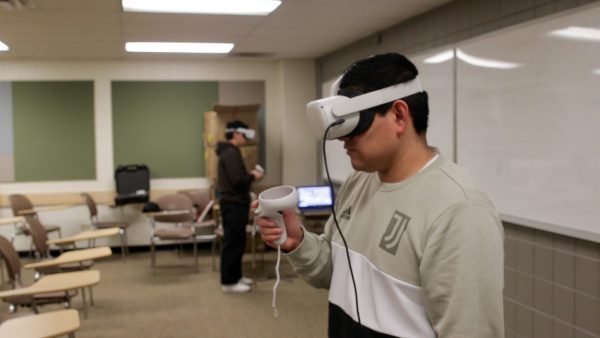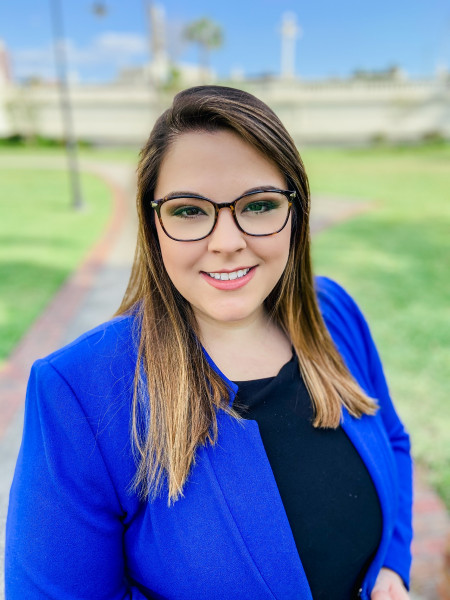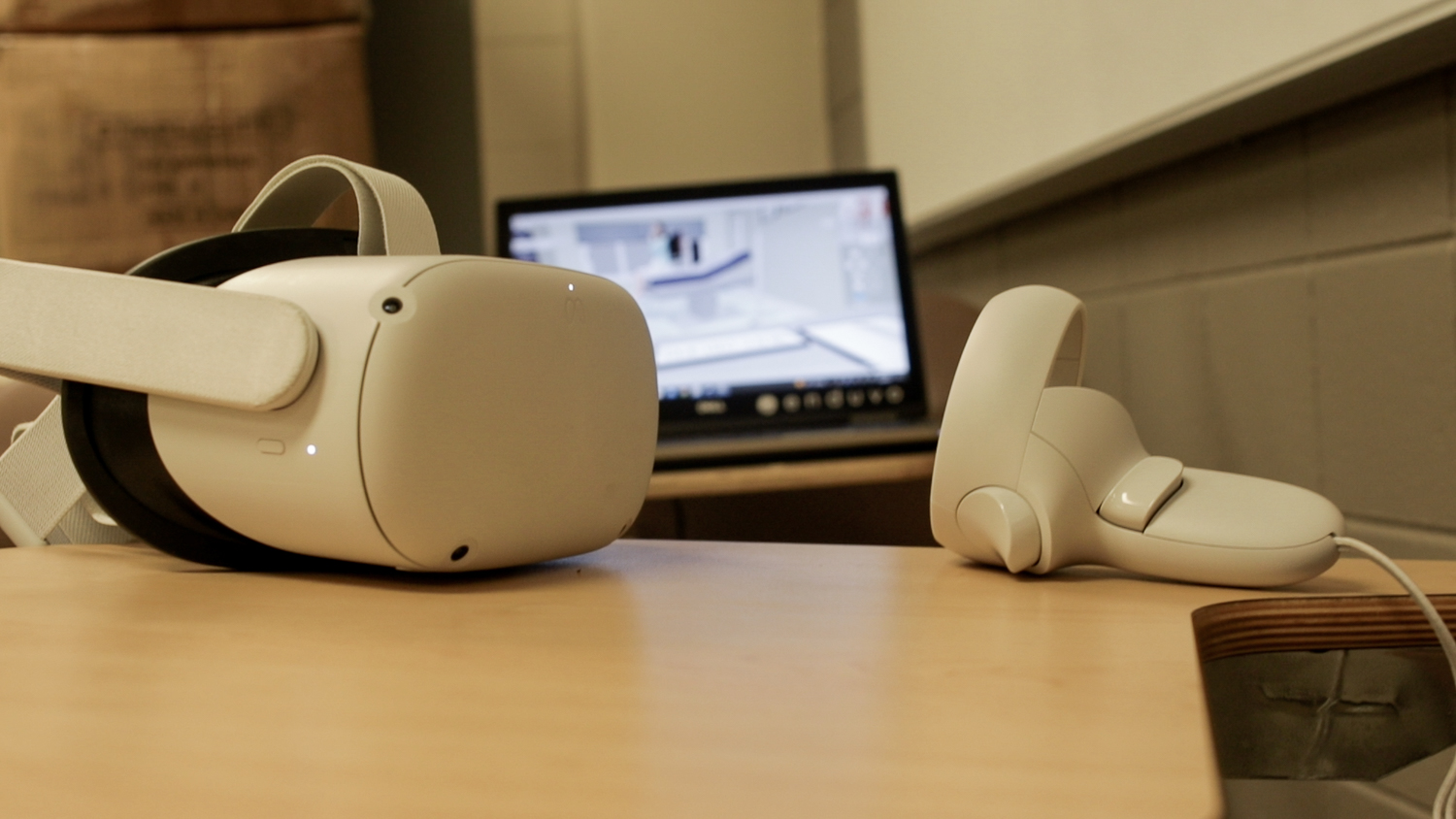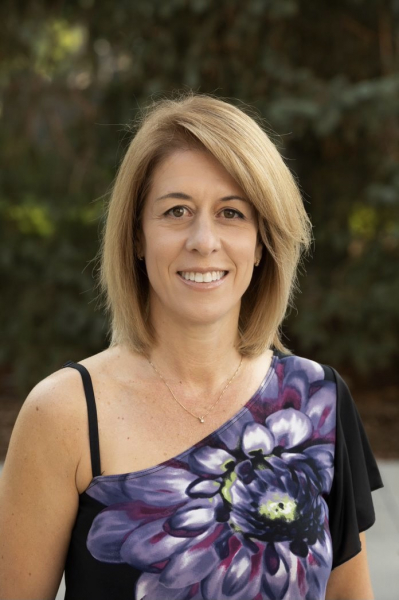
By 2059, the United States will have undergone its biggest demographic shift since its founding nearly 250 years ago, as it will become officially, according to the U.S. Census Bureau – a majority-minority country. The U.S. Census Bureau predicts increases in nearly all ethnic minorities, with the greatest rises in Hispanic and Latinx/e populations who will increase to an estimated 128 million by 2050.
Currently, it’s estimated that 13 percent or 43.1 million people in the United States speak Spanish at home, and as the Hispanic and Latinx/e populations increase in the U.S., today’s students and future medical and veterinary professionals will be meeting that population.
To meet those needs, the Spanish faculty of the Department of Languages, Literatures, and Cultures, have developed Spanish for Specific Purposes (SSP) courses, like Spanish for Animal Health and Care, designed for pre-vet students to gain industry-specific language skills in animal health and agriculture.
Additional coursees include Spanish for life science degrees, business Spanish, or Spanish for Health Care taught by assistant professor, Alyssia Miller De Rutté.

Miller De Rutté, who joined the department in the Fall of 2022, brought with her to CSU expertise in SSP and curriculum development in virtual reality (VR), to help students practice their language skills in near-real world scenarios.
Using the VR software program Enduvo, a user-friendly VR interface made free to institutions that include public and higher education, Miller De Rutté designed a Spanish-based health check-up simulation for students enrolled in Spanish for Health Care to practice near-real-world medical scenarios. Much of Miller De Rutté’s work is built on observations of medical interactions from Nicaragua, the Dominican Republic, and Peru. Her work in Nicaragua is what led Miller De Rutté down the path of using VR to practice SSP, as her students struggled with the reality of language and cultural differences while studying with Miller De Rutté as part of the Nicaragua Clinical Experience.
“No matter how much we practiced, when we got in-country, they [students] hit a block - they couldn't produce the language that they needed in front of a native speaker of Spanish,” Miller De Rutté says. “I was like, ‘Alright, we need like some sort of intermediary, something that they can do that feels real, that will act sort of as a stepping stone’.”
From those initial experiences with students as well as her observations in the Dominican Republic and Peru, Miller De Rutté built the foundations needed to create the four types of VR medical encounter simulations used today in her classroom: hypertension, diabetes, bacterial infections, and parasitic infections.
Beyond the mechanics and use of language, Miller De Rutté’s courses and simulations show students the importance of cultural understanding and teaches students to ask questions based on cultural understanding to create better outcomes for patients. “It serves as a real-world practice before you go out into the real world,” Miller De Rutté says.

Using Enduvo and virtual reality headsets and controls, students discuss symptoms and treatments with virtual Spanish-speaking patients in a virtual physician’s office, and acting as the physician, students solicit information from these VR patients. These health-related questions include culture-based questions such as the use of herbal remedies, which can have health consequences when certain remedies are used along with medications.
“The Spanish speaking population will often go to herbal remedy use before seeking medical treatment,” Miller De Rutté says. “Some patients will feel like they'll be judged, and they won't share that information with their provider because they don't have that trust built.”
“Language difficulties may make it difficult for patients to communicate with health care providers. A lack of information about available services may prevent them from taking up their [health] services or leading them to inappropriate use of services,” Carmen López Ramírez says.

Working both as a senior instructor in Spanish and International Studies, López Ramírez, often teaches her students the need to think beyond what they have come to know in their own experiences of education, legal systems, and healthcare, adopting a more global focus on language and culture in her student instruction.
“You cannot study a language in isolation. We have this misunderstanding that learning a language is just about learning vocabulary and grammar,” López Ramírez says. “You have an iceberg; [Language] is what's visible, and culture is then the rest under water. That's why I think social and cultural contexts are super important."
“In the U.S., the statistic is the provider spends 8 minutes with their patient, in other countries, it's much longer. It's usually at least 30 minutes, and that can go up to an hour sometimes depending on the case itself,” Miller De Rutté says.
Miller De Rutté’s classroom structure not only encompasses the practice of Spanish with a virtual patient and virtual setting, but brings the real-world applications of time constraints with each patient, as over a dozen students take turns moving through two different patient simulations over the course of an hour. These students’ VR training will allow them to speak their patient’s language of choice in a professional manner leading to a better establishment of trust between patient and their medical provider.
You cannot study a language in isolation. We have this misunderstanding that learning a language is just about learning vocabulary and grammar. You have an iceberg; [Language] is what's visible, and culture is then the rest under water." — Carmen López Ramírez
The implications of trust in the patient and medical provider relationship carries great weight in how patients perceive those medical interactions, and according to a 2022 Pew Research study, 32 percent of Hispanic adults in the U.S. did not feel taken seriously by their healthcare provider. Medical providers who use a patient's language of choice will be able to eliminate barriers and improve trust among Spanish-speaking patients, 81 percent of whom will seek out a Spanish-speaking provider.
“It helps [with trust] because they're providing a service in their patient's language of choice. So automatically there is one less barrier,” Miller De Rutté says.
Seeing the whole of a person, particularly one experiencing the discomforts of language and cultural barriers is key to how successful those healthcare professionals will be.
For the students now enrolled in SSP courses like Spanish for Health Care, and for future students yet to be enrolled, these simulations prepare them to work with a Spanish-speaking population not always able to advocate for their own health care needs with non-Spanish speaking medical providers and provide the kind of social, cultural, and linguistic support patients need to heal and thrive.
